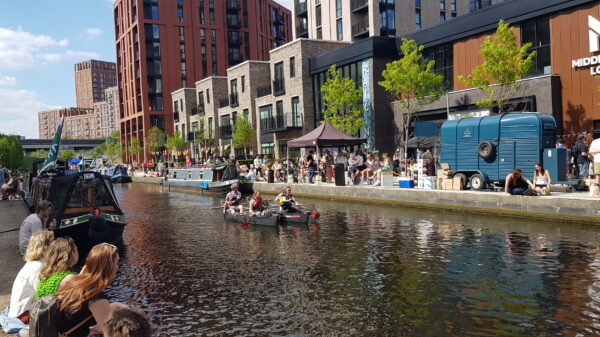Why the Canal Failed and its Future
In 1842 the Manchester & Salford Junction Canal was acquired by the Mersey & Irwell Navigation, which in turn was later acquired by the Bridgewater Trustees. As the trustees had no real use for the Canal due to the greater success of their own Hulme Lock link, the trade of the Manchester & Salford Junction Canal dwindled, mostly just serving the Great Northern Warehouse and adjacent rail links. The canal was last used in 1922 and then abandoned for navigation under the 1936 Manchester Ship Canal Act.
During 1939 to 1940 the canal was drained and the majority of the tunnel (between Brunswick Basin and Watson Street) was converted into an air-raid shelter by Manchester Corporation, who took ownership of it in 1941. In December 1940, nearly 500 tons of high explosive and nearly 2000 incendiaries were dropped on Manchester, resulting in the deaths of nearly 700 people and destroying, or severely damaging, many buildings. Further raids took place throughout the war, with shelters such as the adapted Canal being an important refuge.
[photo by Ian Taylor cc-by-sa/2.0]


